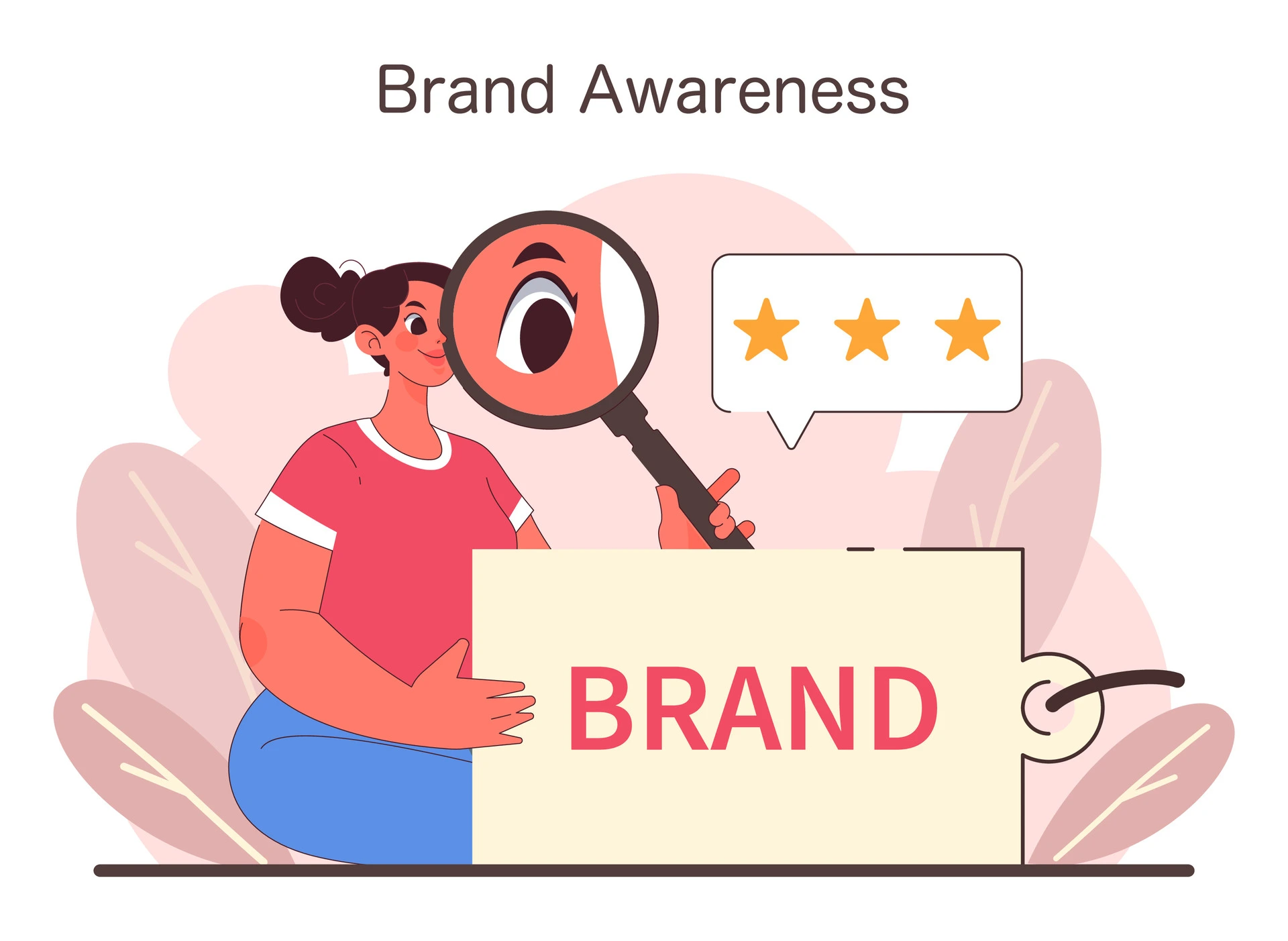Mastering the art of brand building is essential for any business aiming for long-term success. A strong brand not only sets you apart from the competition but also fosters customer loyalty and drives growth. In this guide, we’ll explore seven essential steps in the brand building process, providing actionable insights and strategies to help you create a brand that resonates with your audience. Whether you’re a startup or an established company, these brand building strategies in marketing will be invaluable in shaping your brand’s identity and ensuring its sustained impact.
What Is Brand Building?
Brand building is the strategic process of creating and strengthening a brand’s identity and presence in the market. It involves developing a unique name, logo, and messaging that resonates with your target audience. Effective brand building helps establish a company’s reputation, foster customer loyalty, and differentiate it from competitors. By consistently communicating your brand’s values and benefits, you build a lasting impression that drives customer preference and trust. In essence, brand building is about crafting a meaningful and memorable brand experience that aligns with your business goals and resonates with your audience.
Know More About Branding
- 5 Branding Methods for Achieving Business Excellence
- Unlocking Brand Development Strategies for Sustainable Growth
- Harnessing the Power of Online Branding Strategies for Market Domination
- The Future of Strategic Brand Management: Trends to Watch
Step 1: Define Your Brand Identity
Brand identity is the essence of what your brand stands for. It shapes how customers perceive and interact with your business. Defining your brand identity is crucial as it lays the foundation for all brand-building strategies in marketing.
The key elements of brand identity include your mission, vision, values, and personality. Your mission defines your purpose, while your vision outlines your long-term goals. Values represent the principles that guide your actions, and your personality reflects the tone and style of your brand communication.
To define and articulate your brand identity, start by clarifying your mission and vision. Ensure they align with your business goals and resonate with your target audience. Identify your core values and how they influence your brand’s behaviour. Finally, develop a distinct brand personality that differentiates you from competitors. This will help create a cohesive and compelling brand image throughout the brand building process.
Step 2: Understand Your Target Audience
Understanding your target audience is pivotal in the brand building process. To build a brand that resonates, you need to know who your audience is and what they desire. This knowledge forms the bedrock of effective brand building strategies in marketing.
Start by researching your audience. Use surveys to gather direct feedback and insights from potential customers. Social media platforms are another invaluable resource, offering a wealth of data on user interests and behaviours. Analysing this data helps you identify trends and preferences.
Creating detailed buyer personas is the next crucial step. These personas represent your ideal customers and include demographic details, interests, and pain points. By tailoring your brand’s message and strategies to these personas, you ensure that your brand building efforts are aligned with the needs and desires of your audience.

Step 3: Develop a Unique Value Proposition (UVP)
A Unique Value Proposition (UVP) is crucial in the brand building process. It defines what makes your brand stand out from the competition and communicates the distinct benefits your brand offers. A compelling UVP is central to effective brand building strategies in marketing because it highlights your brand’s unique strengths and appeals directly to your target audience.
To create a compelling UVP, follow these steps:
- Identify Your Audience’s Needs: Start by understanding what your target audience values most. Conduct market research to gather insights into their pain points and preferences.
- Analyse Competitors: Examine what your competitors are offering. Identify gaps in their UVPs that you can exploit to differentiate your brand.
- Highlight Your Unique Benefits: Clearly articulate how your product or service meets the needs of your audience better than anyone else. Focus on what makes your offering unique and valuable.
- Keep It Simple and Clear: Your UVP should be concise and easily understood. Avoid jargon and ensure it resonates with your audience.
- Test and Refine: Test your UVP with real customers and gather feedback. Use this information to refine your proposition until it effectively communicates your brand’s unique value.
Example of Strong UVPs:
- Apple: “Think Different” – Apple’s UVP emphasises innovation and creative thinking, positioning it as a brand for those who challenge the status quo.
Step 4: Create a Consistent Brand Voice and Messaging
Consistency in brand communication is crucial for building a strong, recognizable brand. When your brand voice and messaging are uniform across all channels, it reinforces your brand’s identity and helps build trust with your audience. This consistency makes your brand more memorable and reliable, which is key to effective brand building and brand positioning.
To develop a brand voice that resonates with your audience, start by understanding their preferences and values. Create a tone and style that reflect your brand’s personality while aligning with your target audience’s expectations. For example, if your brand is youthful and energetic, your messaging should be lively and engaging. This approach is a fundamental aspect of brand development strategies.
Maintaining consistency across different platforms and marketing materials requires careful planning. Create brand guidelines that outline your tone of voice, messaging style, and visual elements. Ensure all team members and partners adhere to these guidelines to keep your brand’s communication unified. Regularly review and update your materials to reflect any changes in your brand’s strategy or market position. Incorporating keywords strategically in your content can further enhance your brand’s visibility and alignment with your brand development strategies.
Step 5: Design a Memorable Visual Identity
Components of a Visual Brand Identity:
Your visual brand identity consists of several key elements: the logo, colour palette, and typography. These components work together to create a cohesive and recognizable brand image. The logo serves as the face of your brand, while the colour palette and typography help to convey your brand’s personality and values.
Tips for Designing a Visual Identity That Reflects Your Brand’s Personality:
When designing your visual identity, it’s crucial to ensure it aligns with your brand’s personality. Choose colours and fonts that evoke the desired emotions and associations. For example, bold and vibrant colours can represent a dynamic and energetic brand, while muted tones may suggest sophistication and elegance. Your logo should be simple yet distinctive, allowing for easy recognition and recall.
Importance of Consistency in Visual Branding Across All Touchpoints:
Consistency is key in the brand building process. By maintaining a uniform visual identity across all touchpoints such as your website, social media, and marketing materials—you reinforce your brand image and make it more memorable. Consistent visual branding helps build trust and credibility, as it assures your audience that they are engaging with the same brand, no matter where they encounter it.
Step 6: Build a Strong Online Presence
A strong online presence is crucial in the brand building process. Your website acts as the cornerstone of your digital identity, offering a central hub where potential customers can learn about your products, values, and mission. Ensure your website is user-friendly, visually appealing, and provides valuable information that reflects your brand building strategies in marketing.
Social media platforms play a significant role in reaching and engaging with your audience. They provide an opportunity to interact with customers, share updates, and gather feedback, all of which are essential components of the brand building process. Consistent and meaningful engagement on social media can enhance your brand’s visibility and credibility.
Creating valuable content that aligns with your brand is vital. This includes blog posts, videos, infographics, and social media updates that resonate with your target audience. High-quality content not only attracts and retains customers but also positions your brand as an authority in your industry. By focusing on these aspects, you can effectively master brand building and establish a strong, lasting presence in the market.
Step 7: Foster Customer Relationships and Loyalty
Building strong relationships with your customers is crucial for long-term brand success. When customers feel valued and connected to your brand, they are more likely to remain loyal and advocate for your products or services. Effective customer relationship management not only enhances brand loyalty but also drives repeat business and positive word-of-mouth.
To engage with your audience and foster loyalty, consider implementing customer service practices. Provide prompt and helpful support to address customer concerns and enhance their overall experience. Additionally, loyalty programs can be a powerful tool to reward and retain your most dedicated customers. These programs can include perks such as discounts, exclusive offers, and early access to new products.
Brands like Apple and Amazon excel in customer relationship management. Apple’s dedicated customer service and personalised experiences create a strong bond with its users, while Amazon’s Prime membership offers numerous benefits that keep customers engaged and loyal. These examples highlight the importance of prioritising customer relationships in your brand building strategies.
FAQs for Mastering Brand Building: 7 Essential Steps You Can’t Miss:
1. What are the key steps in the brand building process?
The essential steps in brand building include defining your brand identity, understanding your target audience, developing a Unique Value Proposition (UVP), creating a consistent brand voice and messaging, designing a memorable visual identity, building a strong online presence, and fostering customer relationships and loyalty. Each step plays a crucial role in establishing and strengthening your brand in the market.
2. How do I define my brand identity?
Defining your brand identity involves clarifying your mission, vision, values, and personality. Your mission should articulate your purpose, while your vision outlines long-term goals. Values represent guiding principles, and your brand personality reflects the tone and style of your communication. Together, these elements shape how your brand is perceived and interacted with by your audience.
3. Why is understanding my target audience important for brand building?
Understanding your target audience is crucial because it helps tailor your brand’s message and strategies to meet their needs and desires. By researching your audience’s demographics, interests, and pain points, you can create detailed buyer personas. This ensures that your brand resonates with your audience and aligns with their expectations, making your brand-building efforts more effective.
4. What is a Unique Value Proposition (UVP) and how do I create one?
A Unique Value Proposition (UVP) defines what sets your brand apart from competitors and highlights the unique benefits you offer. To create a compelling UVP, identify your audience’s needs, analyse competitor offerings, and clearly articulate how your brand meets these needs better. Keep your UVP simple and clear, and test it with real customers to refine its effectiveness.
5. How can I maintain consistency in my brand’s visual identity?
To maintain consistency in your brand’s visual identity, ensure that elements like your logo, colour palette, and typography are uniform across all touchpoints, including your website, social media, and marketing materials. Develop brand guidelines that outline these visual elements and ensure that all team members and partners adhere to them. Regularly review and update your materials to reflect any changes in your brand strategy.
Ready to take your brand to the next level? Connect with us today to explore how HT Media can amplify your presence across our diverse portfolio of 25+ brands and properties. Let's turn your brand vision into reality!


















Comment